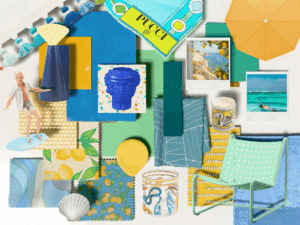This series of how-to guides will demonstrate how to use pastels and watercolours. By the end of this series, you will be confident in applying colour to a range of drawings.
How to render drawings – part 1 of 6
An introduction to pastels and watercolours
This series of videos will demonstrate how to use pastels and watercolours. By the end of this series, you will be confident in applying colour to a range of drawings.
What is rendering?
Rendering is a process where colour can be added to a drawing to show a range of finishes that include; textures, patterns, colours, light & shade.
What are the textures that I’m trying to represent?
Before you start a drawing, you need to think about the different finishes and textures that you are wanting to represent. These finishes may be rough, smooth, matt, shiny, plain or patterned, so careful consideration should be given.
Pastel pencils and pastel chalks
Pastels come in two different forms; pastel pencils and pastel chalks. When using this medium you will also need cotton wool buds and cotton wool balls to help with blending. Pastel pencils come in a range of colours and can be applied directly to the drawing.
Once applied, the intensity and the depth of the colour, can be adjusted by using a cotton bud. When using pastel chalks, you will also need a scalpel. Using a downward motion with the scalpel, shave some of the colour on to a spare piece of paper. Pastel chalks allow you to blend a range of colours and achieve the closest possible colour to your samples and finishes. A cotton wool bud is a helpful tool to blend the powders together, until you have achieved the required colour.
Here you can see I have blended primary red, yellow and blue to achieve the secondary and tertiary colours that can be found on a colour wheel.
Watercolour pencils and water based acrylics
Watercolour pencils can be applied directly to the paper in a similar way to using a colouring pencil. A wet brush can be applied over the top to blend or dilute the colour. A finer brush can be used for more intricate detail, whereas a larger brush is better for a larger surface area.
When using water based acrylics, these can be used directly from the tube or a small amount squeezed into a tray and diluted with water. Here I have prepared red, blue and yellow. Red and yellow have been mixed together to create orange, blue and red have been mixed to create purple and blue has been added to the yellow to create green.
When using water based paints, to avoid the paper from rippling, I would recommend using watercolour paper as this is more absorbent.
The next video in this series will demonstrate how to represent 2 different types of flooring.

